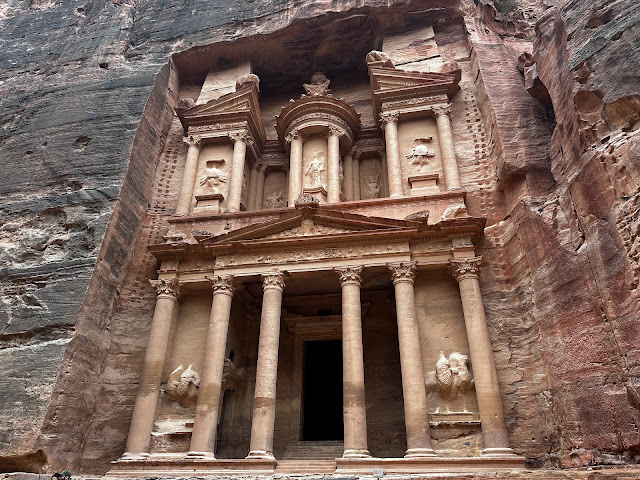Ajanta Caves
 |
| The distant view of the Ajanta Caves |
The currently identified 29 caves constitute of monasteries (Viharas) and worship-halls (Chaityas) attributed to the Buddhist tradition. The interior of the caves also contains "Dry-Fresco" (paintings on top of a dry plaster surface rather than into wet plaster) depicting the past lives and rebirths of Buddha and rock-cult sculptures related to Buddhism.
The caves which have
been numbered for ease of identification based on the order they could be visited
as opposed to the time of their construction have been attributed to two distinct
periods.
The earliest group of
caves are generally believed to be cave numbers 9, 10, 12, 13 and 15A. Of these
cave numbers 9 and 10 have been designed as worship-halls containing Stupas. Cave
numbers 12, 13 and 15A have been identified as monasteries (Viharas). The interior
painting of the caves depict stories from Jatakas (the previous lives of
Buddha). These caves are estimated to have been constructed either under the patronage
of the Satavahana Dynasty (estimated to have reigned
from late 2nd Century BCE to early 3rd Century CE) or the Maurya Empire (Estimated
to have reigned from 322 BCE to 184 BCE).
The second group of caves (cave numbers 1 to 8, 11, 14 to 29) are generally attributed to the 5th Century CE, during the reign of Emperor Harishena of the Vākāṭaka Dynasty (who reigned from approximately 480 CE to 510 CE). These caves which depict the artistic influence of the Gupta period have been attributed to Mahayana Buddhism. Cave numbers 19, 26 and 29 have been identified as worship-halls with the rest of caves been identified as monasteries.
Image gallery
Ajanta Cave 1
Ajanta Cave 2

















































































































Comments
Post a Comment